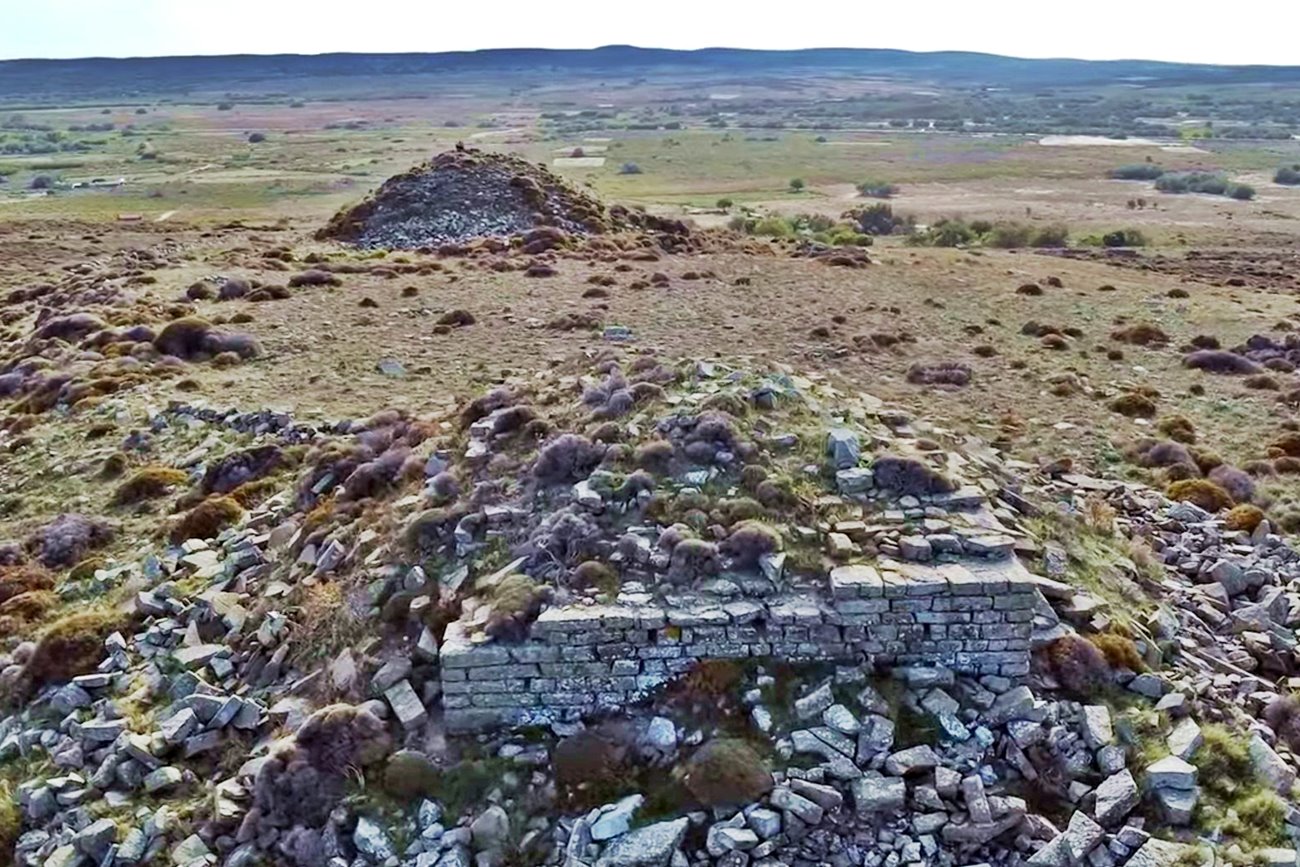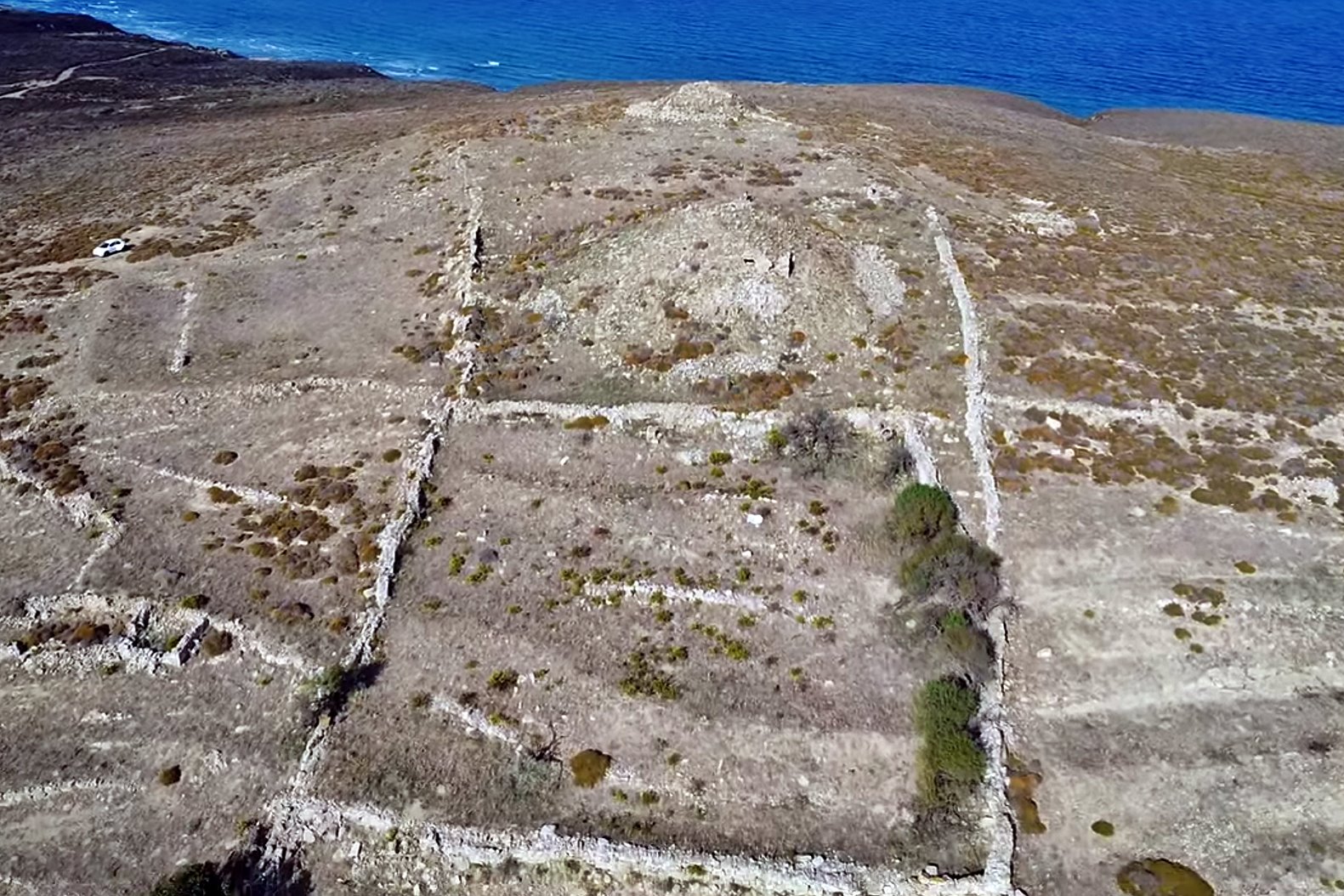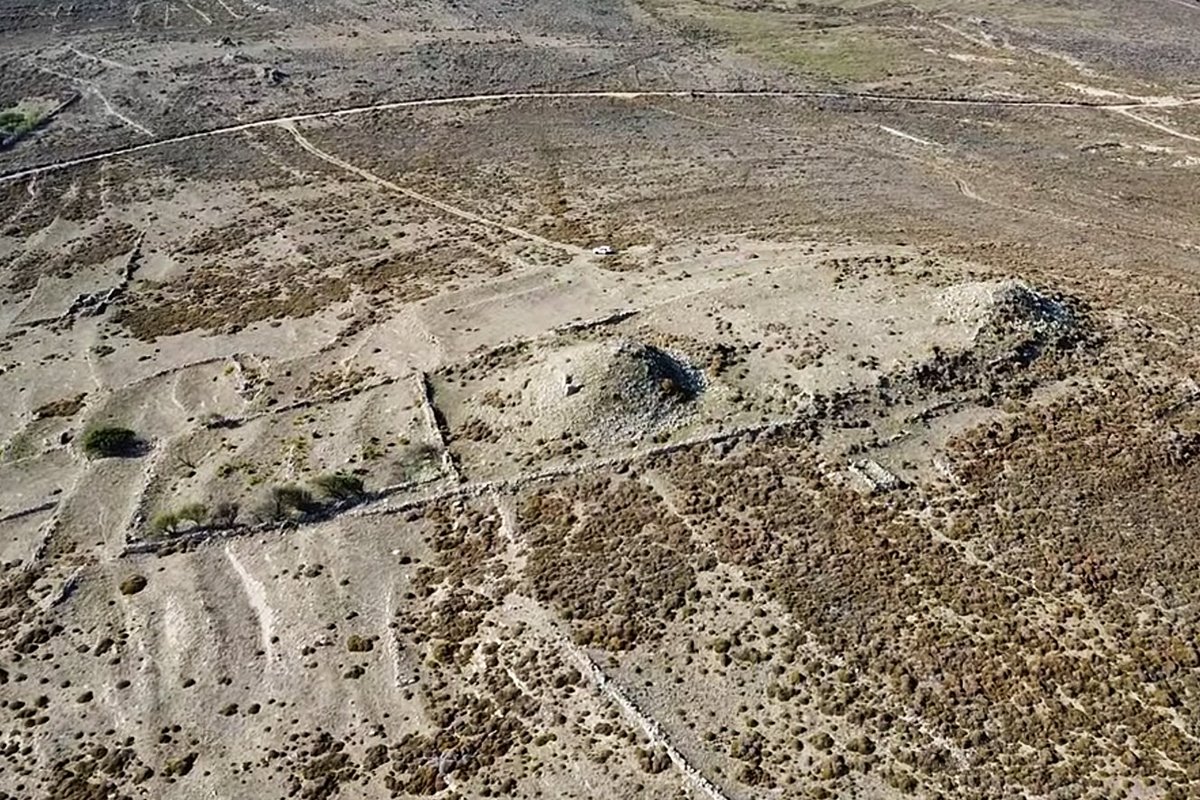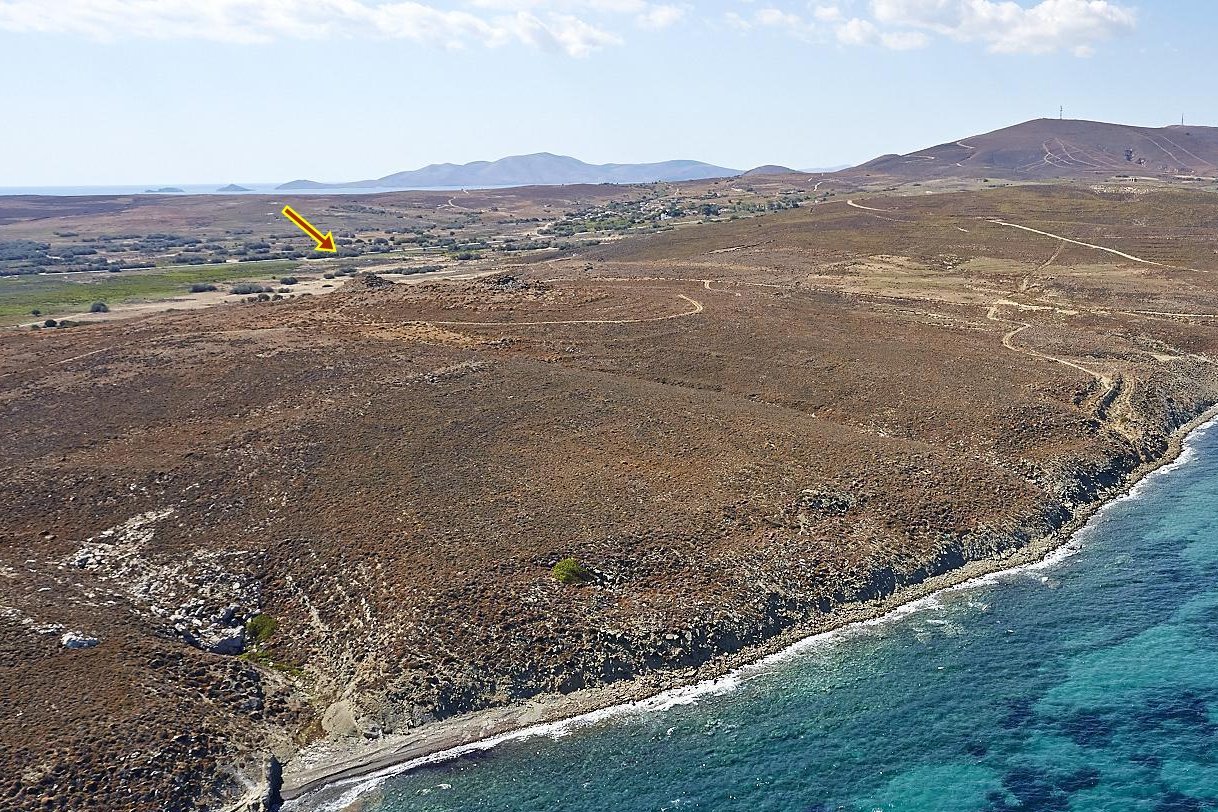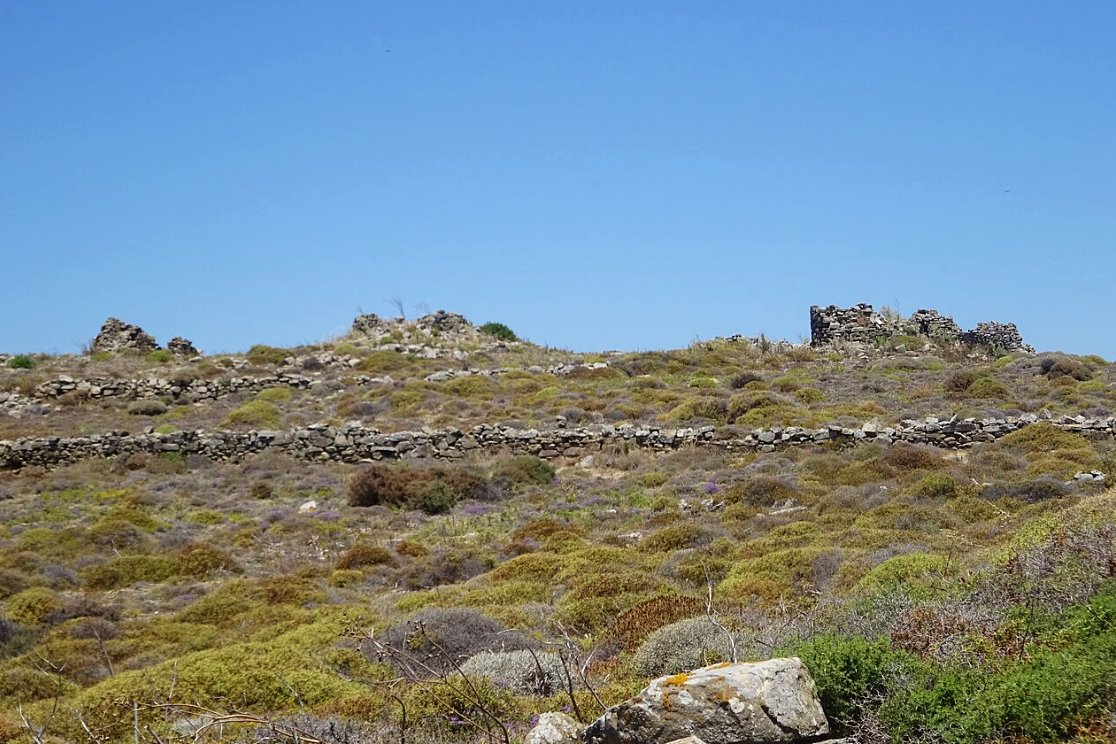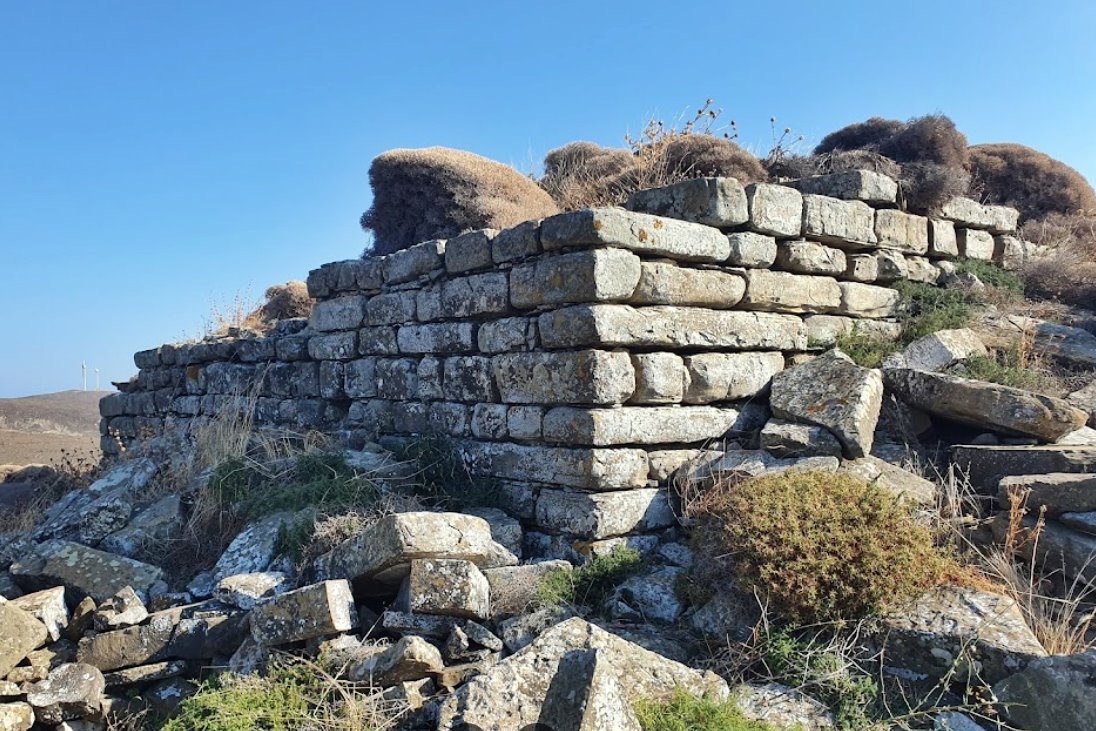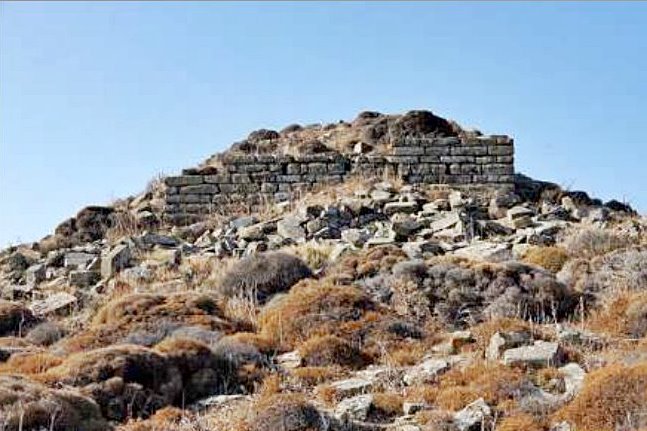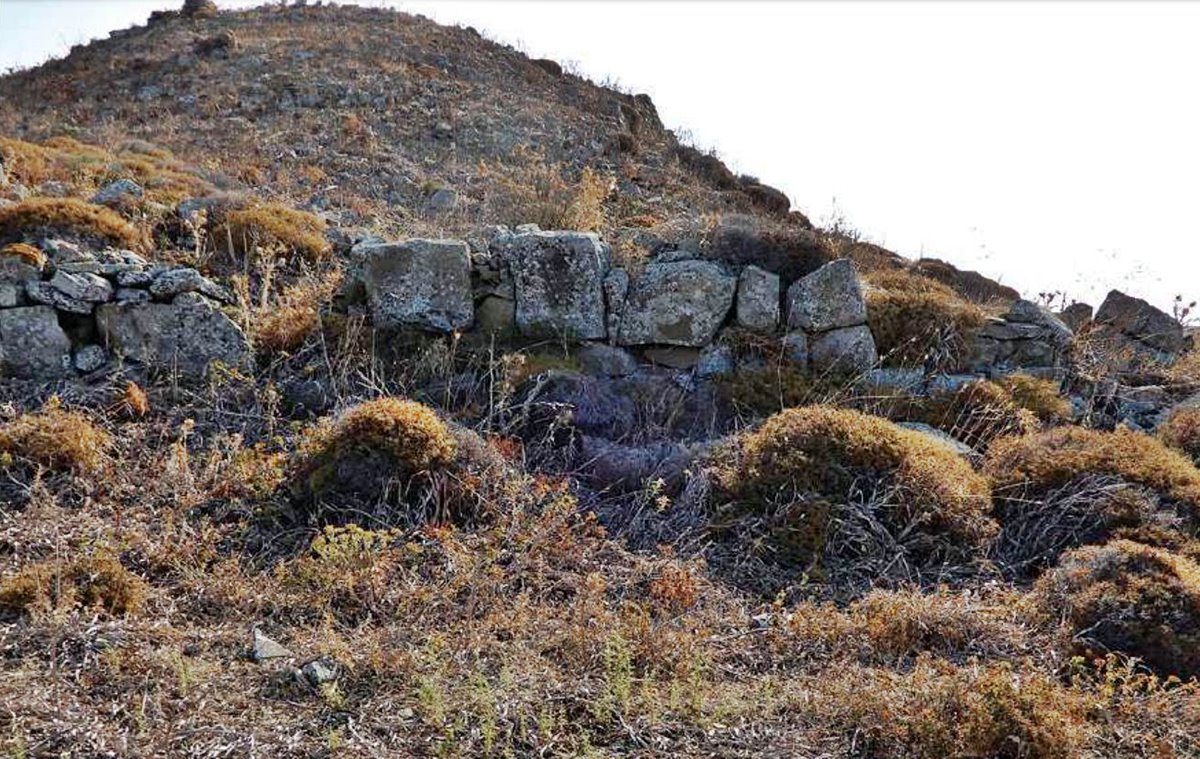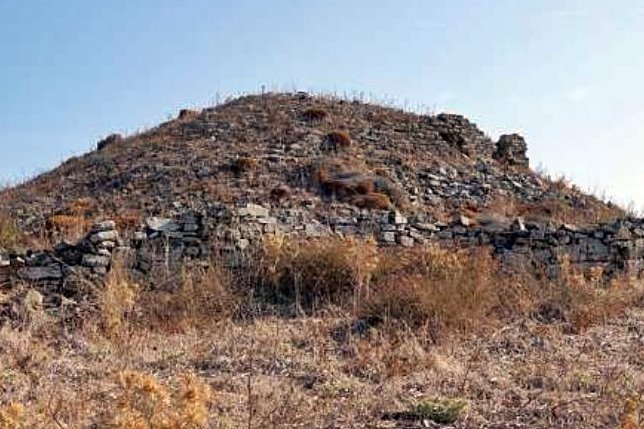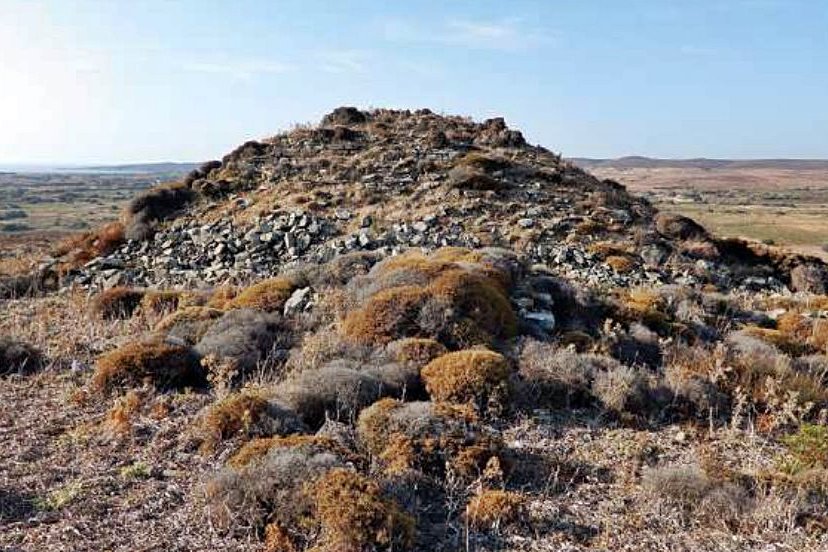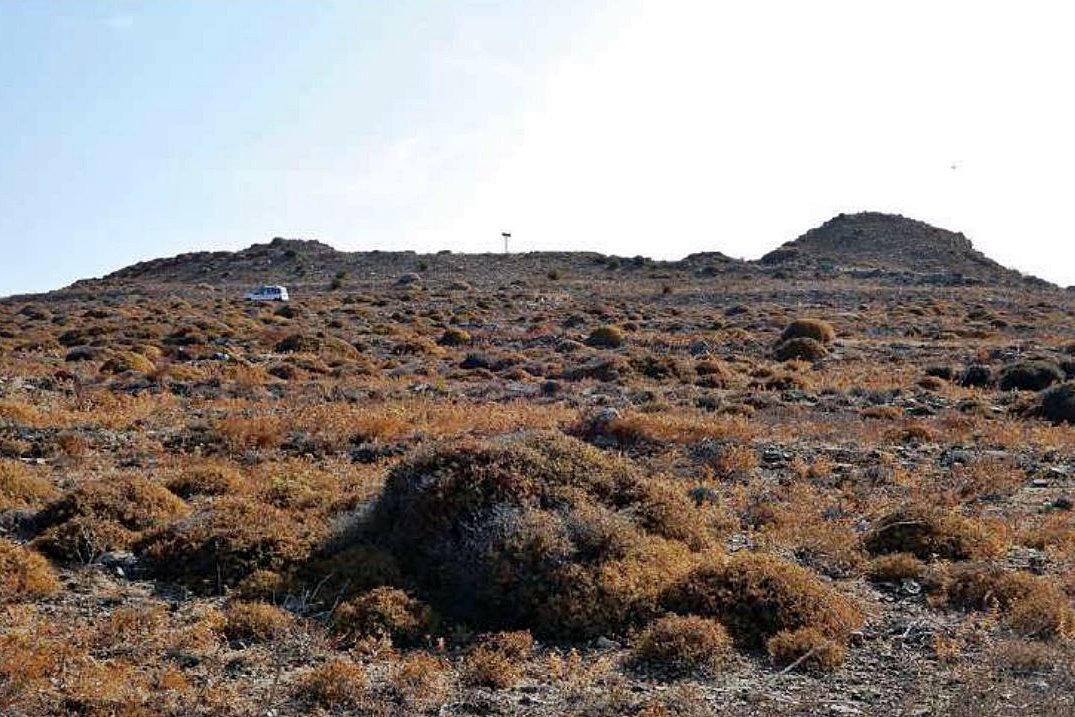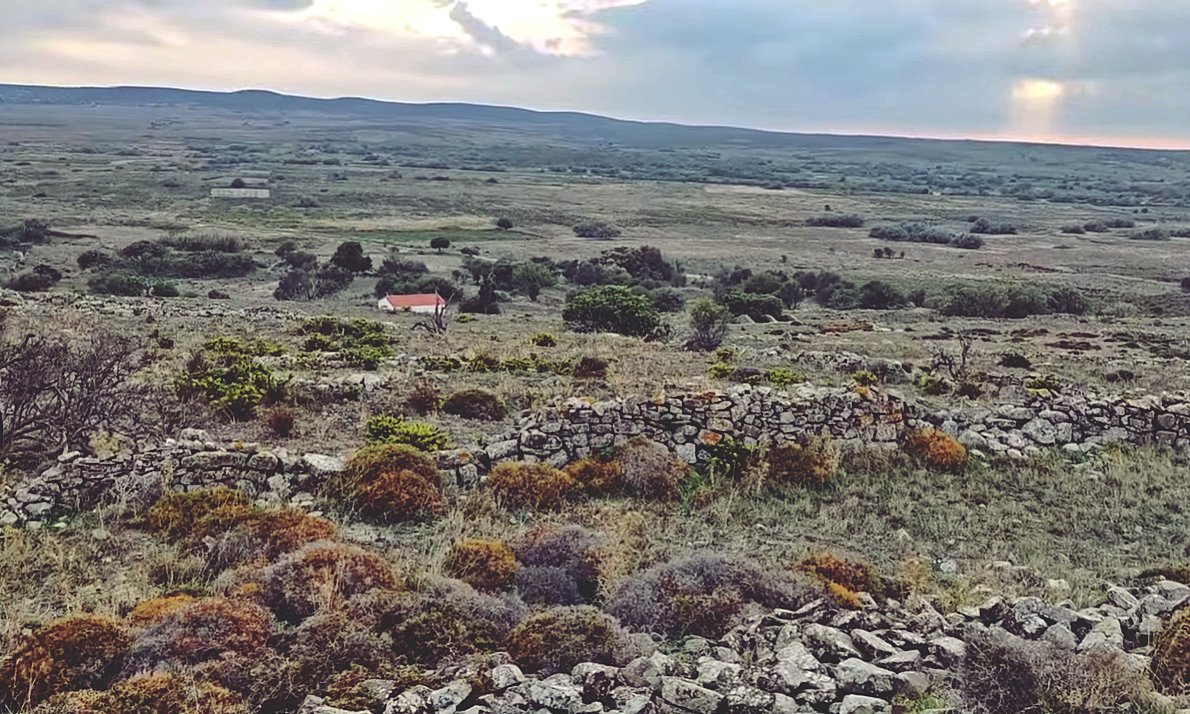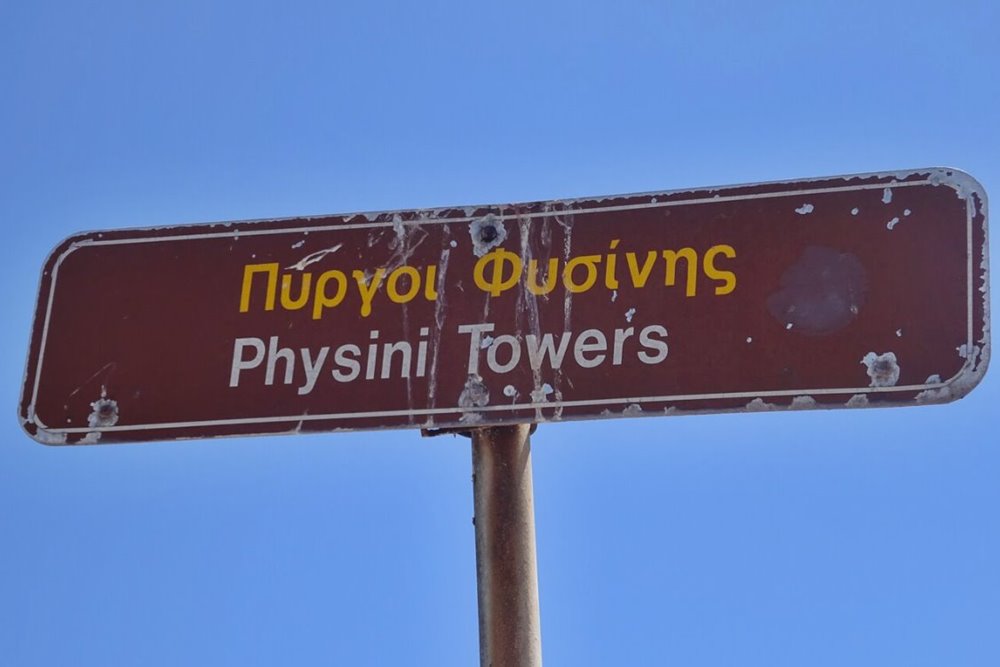Fisini, Lemnos, Lesbos,North Aegean
Towers of Fisini
| Location: |
| At the coast nort of the village Finini in SE Lemnos |
| Region > Prefecture: |  |
| North Aegean Lesbos | |
| Municipality > Town: | |
| City of Lemnos • Fisini | |
| Altitude: | |
| Elevation ≈ 50 m |
| Time of Construction | Origin | |
| Various periods | Unknown |
|
| Castle Type | Condition | |
| Castle Ruins |
In Ruins
|
The “Towers of Fisini” is a fortress of uncertain date of construction on the south-eastern coast of Lemnos.
The only thing that can be distinguished from the castle are the ruins of two towers, hence the name. There are other ruins of course, but at a low height.
Location & Strategic Scope
The castle is located 1.5 north of the village of Fisini, on the plateau of a hill, 300m from the sea. A little further south, about 500 meters, there is a small bay with shallow waters that once, during the Middle Ages, perhaps was a port.
Very close, at a distance of 800m to the NW are the ruins of a larger and rather newer medieval settlement, which in Kastrologos we identify with the known from old maps Kastro of Scala.
This area which includes the villages of Fisini, Agia Sofia and Skandali is still called today Skala and the inhabitants Skaliotes. In the area there were other settlements that have been abandoned and deserted. There was Agiomarnos (where we place Skala), Goudila (perhaps “Tilo” on the old maps) and Parthenomtos. In general, the barren hills around the villages of Skala are full of remains of past times.
History
The fortress of the Fisini Towers is identified by some with the medieval castle of Skala which is depicted on old maps. This hypothesis is supported by the fact that there is a small bay a little further south of the castle at 500m (which today cannot in any way be considered a port).
Several maps show on the east coast of the island the castle of Skala which apparently (due to its name and position) protected a port. Buondelmonti (1418) includes the castle on his map without naming it. The Ottoman admiral Piri Reis (1521) mentions only “the shallow waters known as Iskele” and marks them on his map as “Skala-siglari: shallows of Skala”. It is noted as a castle by: Bordone (1528, La Schala), Rosaccio (1598, La Schala), Boschini (1658, La Stala), Piacenza (1680-85, La Scala), anonymous (1685, La Scala), Dapper ( 1688, La Scala) and Coronelli (1696, La Scala).
The Italian cartographer Francesco Piacenza (1637-1687) in his work L' Egeo redivivo (“The Revived Aegean” - Modena, 1688) notes that there were 7 castles in Lemnos. One of them was the castle of Skala.
However, although it is not excluded that the castle in the Fisini Towers was indeed the castle of Skala, in Kastrologos we believe that it is more likely that the castle of Skala is identified with the neighboring fortified settlement in old Agiomarnos which we call Skala Fisini Castle. The reason is that the castle at the Towers is too small for there to have been a significant settlement and mainly because it does not appear to be from the Venetian/Late Byzantine/Post-Byzantine period but much older.
The construction technique of the eastern tower of the fortification (which is its only preserved element) shows that it belongs to an early period: it is probably from Late Antiquity – Roman or Early Byzantine. As can be seen from the use of mortar in the masonry, the tower was repaired and reused during the Byzantine Period as well. It certainly does not belong to the Venetian Period of Lemnos (1207-1278) as some websites claim. (The tower bears no resemblance to the Venetian towers of the 13th century.)
In conclusion, we do not know exactly when the fortification at the Fisini Towers was built. It probably existed from Late Antiquity. The only thing certain is that it was also used during the Byzantine Period, unknown from when to when.
During the Late Byzantine Period (13th-14th century) it probably remained in use. During the Turkish occupation it was abandoned and deserted early, otherwise the towers would have been mentioned in monastic documents (Lemnos is full of dependencies of the monasteries of Mount Athos and Patmos).
In the middle of the 19th century the castle was visited by the German researcher Alexander Conze. He found it more or less in the same condition as it is today. In 1923, the area was investigated by a group of archaeologists from the Italian School of Athens under the archaeologist Alessandro Della Seta who was excavating in Poliochnio at that time. It was the Italians who made the association (not identification) of the castle with medieval Scala and also hypothesized that there was a Roman fortress or mansion on the site (Italians of that time tended to find Roman remains everywhere...).
Since then, no other serious archaeological research has been done on the site of the Fisini Towers and the surrounding area.
Structure, Fortification & Buildings
The fort has a rectangular shape with dimensions of 50✖55m. The area it covers is 2,700 sq.m. and the perimeter is about 215m.
The trace of the fortified enclosure is visible along almost the entire length of the perimeter, but it is preserved at a low height (photo 13 – the SE wall) and in stone piles. And we suspect that part of the enclosure may have been roughly repaired in the past to be reused as a corral.
In the masonry of the towers and the outer enclosure (a little) mortar and fillings of smaller stones have been used. This means medieval construction, but the use of these elements may have been made as part of later modifications and repairs. The original construction appears to be quite old, and may date from the Early Byzantine Period or even earlier, from Late Antiquity. However, we cannot decide with certainty about the construction period of the fortification.
The eastern tower (photos 6,7) is preserved to a certain height and appears to have been an elaborate construction. Its dimensions are 8.70✖10.60m. Its original height must have exceeded 10m. The western tower (photos 9,10), located at the highest point, is a large pile of ruins and we cannot draw any conclusions about the size and quality of construction, but it is reasonable to assume that it was similar to the eastern tower.
Interestingly, the Italian archaeologist Doro Levi (who was in Della Seta's group) noticed that the western tower was surrounded by the foundations of a large square building with sides 31m long. According to him, this building was obviously ancient. He called the marble plinth of the entrance to the building, which he located in front of the eastern side of the western tower, a propylaion. Today, a pile of marbles covered by bushes in front of the west tower (photo 8) may be the propylaion that the Italian saw. As for the square building, today it is not clearly visible, but at this point it is more likely that it was some inner fortified enclosure (something like a keep) and not a building (which would be strange if it enclosed such a large tower unless it was not a tower, but something else, e.g. a temple).
The space between the two towers is full of stone piles and indistinct building foundations. There are also fragments of marble items (ancient columns, etc.) some of which have been incorporated into the two chapels located near the castle.
At the foot of the hill, a large area is covered by relatively recent buildings and walls, probably from the post-Byzantine period. It seems that there was a settlement here (the Goudilas?) and perhaps monastic dependencies. This whole area (of the castle and the settlement) was already abandoned and in ruins in the 19th century.
| First entry in Kastrologos: | November 2024 |
Sources
- Video by the user Hiking Adventures Κάστρο Φισίνης, το σημαντικότερο κάστρο της ανατολικής Λήμνου!, source of the photos 1,2,3,11,13 (October 2024)
- Carlo De Domenico, «La prima esplorazione italiana dell'isola di Lemno (1923)», Annuario della Scuola Archeologica di Atene e delle Missioni Italiane in Oriente, 2020, vol. 98, pp. 554-608. (source of the photos 7,8,9,11)
- Doro Levi, «Esplorazione dell'isola di Lemno», relazione inedita senza numero di protocollo 30.06.1929, Αρχείο SAIA (Ιταλικής Αρχαιολογικής Σχολής Αθηνών), 1929
- Alexander Conze, «Reise auf den Inseln des Thrakischen Meeres», Hannover :Carl Rumpler,1860.
|
|
| Access |
|---|
| Entrance: |
| Free access. |
| Other castles around |
|---|
| Tower of Filonikos |
| Castle of Skala of Fisini |
| Castle of Kotzinos |



